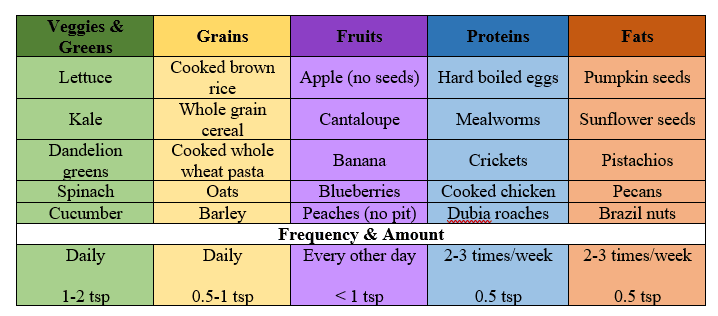by Dr. Cayla Iske and Dianne Cook, LVT
Hamsters and gerbils are fun and entertaining companions, but they come with unique nutritional requirements. Proper nutrition is one of the most important decisions a pet parent can make to set their pet up for a long, high-quality life. The foundation of their nutrition should be a well-balanced and biologically appropriate diet. The best approach to meeting their caloric and nutrient needs starts with ~75% of their diet being supplied through a uniform complete fortified food. This uniform presentation prevents selective eating and ensures that they receive a balanced intake of both macronutrients (protein, fat, fiber, etc.) and micronutrients (calcium, iron, vitamins, etc.) The remaining ~25% of their diet, however, is a great way to not only introduce variety and nutritional enrichment but provide supplementation based on your individual pet’s needs.
Other Foods for Hamsters and Gerbils
When creating a well-rounded diet for your fur baby, it is important to consider species-appropriate food items. If we consider their digestive physiology, both hamsters and gerbils are omnivores by definition. Given their natural, plant-based environment, however, wild hamsters and gerbils do tend to be predominately herbivorous as those are the food items most available to them. When considering what additional diversity of foods to offer beyond their uniform diet, it is important to keep in mind their nutritional needs and common natural food items. Therefore, greens and veggies should be a predominant proportion of supplementary foods along with a variety of grains, proteins, fats, and fruits. Insects, such as mealworms, can provide great nutritional benefit and enrichment when fed infrequency as a treat as well. It is best to offer new and novel supplemental foods in very small amounts initially, no larger the size of a pea, to avoid digestive issues. Some great options for each of these categories are listed here:

As a starting point, a total of 1.5 to 4.5 tsp of veggies, greens, fruits, seeds, and/or proteins should be offered per day based on the size of your companion. It is important to also note that these are just suggestions and an exact feeding regimen will vary by individual and their needs. We recommend you consult your veterinarian about the best feeding schedule for your pet’s specific needs.
Prepackaged Treats
You can choose from a wide array of prepackaged treats on the market labeled for hamsters, gerbils, and other small animals. Everything from yogurt drops to seed sticks to hay-based treats; which all bring different nutritional impacts, some good and some not so good, to your animal. While you may think of yogurt as healthy and providing nutritional benefits in your diet, for your pet yogurt drops may bring some fat and protein but unfortunately, also contain a high amount of unnecessary sugar. Your pet may love these yogurt drops (because who wouldn’t love a tasty bolus of sugar) but fed too often they could contribute to obesity and other gastrointestinal issues. Seed sticks offer a more complete nutritional profile with some variety, but they often also contain sugary products to bind them together. Additionally, while small amounts of seeds are a natural part of these animals’ diet, seed sticks allow for the selection of seeds and binders which leads to consumption of the most calorically dense and sweetest portions. Uniform treats that align more closely to these species natural nutritional needs are a great way to prevent selective eating and ensure balanced nutritional intake. Oxbow offers treats in several different flavors and physical presentations that you may choose to add to your little friends’ diet to add flavor, texture, and nutritional variety. Furthermore, adding a diversity of nutrients, and especially different fibers, to hamster and gerbil diets can support proper gut health (Grant, 2014).
Variety
There is a common and important theme when discussing diets in a range of small exotic companion mammals, such as hamsters and gerbils. That theme is the nutritional benefit as well as physical and mental enrichment of variety. Knowing what you can feed allows pet parents to construct a personalized menu for their pets to keep things stimulating as well as nutritionally beneficial. Through this variety you are providing dietary enrichment, offering a diverse nutrient profile, and finding fun ways to interact and connect with your little guys and gals. Hamsters and gerbils are natural prey species that may be leery of new foods, so be gradual in your introduction of new items but don’t forget that providing variety in their diet can help them adapt and keep mealtime interesting.
References
Grant, K. 2014. Rodent nutrition: digestive comparisons of 4 common rodent species. Vet Clin North American Exotic Animal Practice. 17.3: 471-83.
Learn More About Hamster and Gerbil Care
What is the best food that I can feed my hamster or gerbil?
What signs should I watch for that indicate that my hamster or gerbil needs to see a vet?
